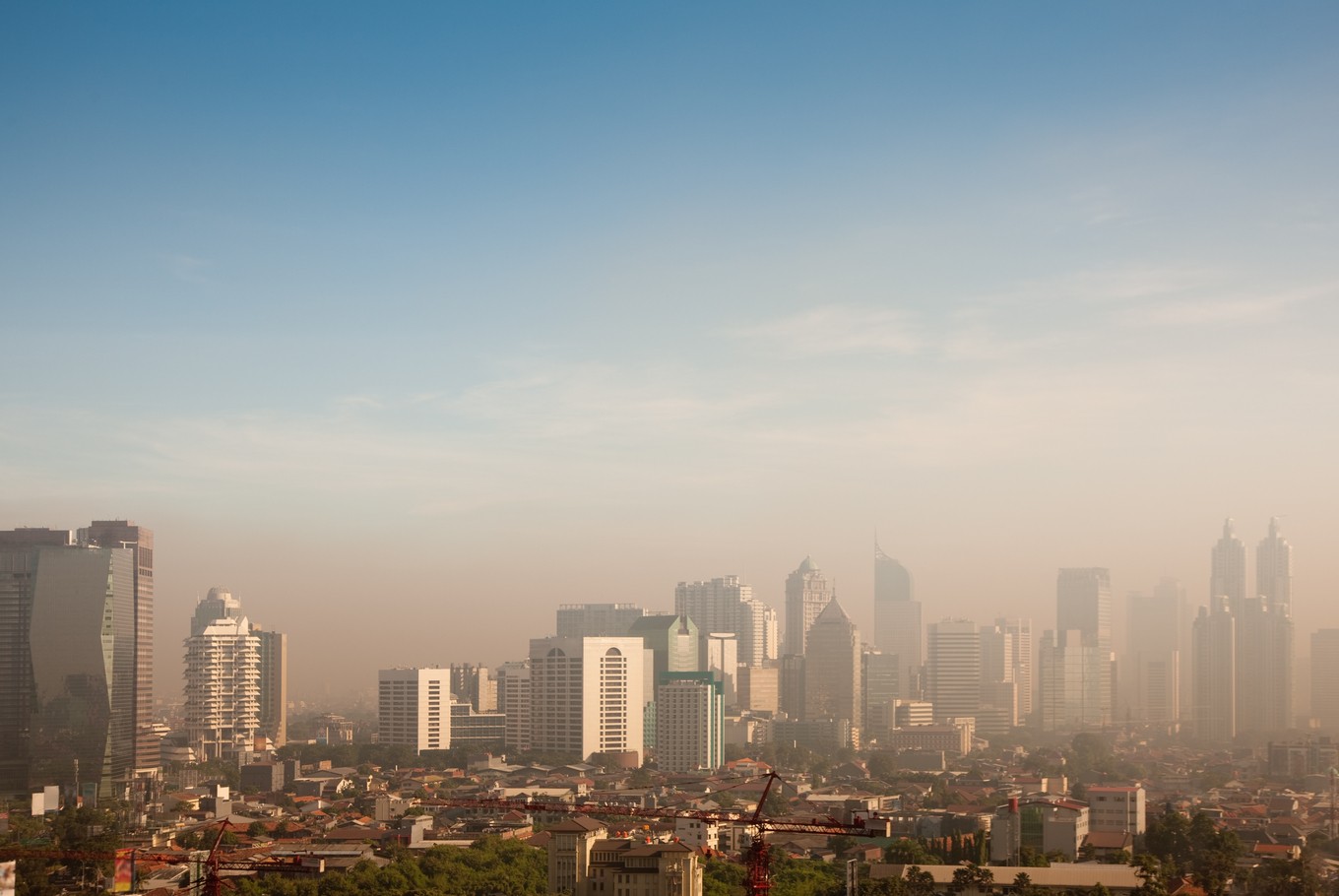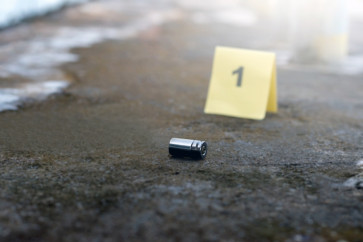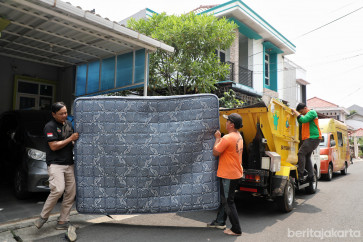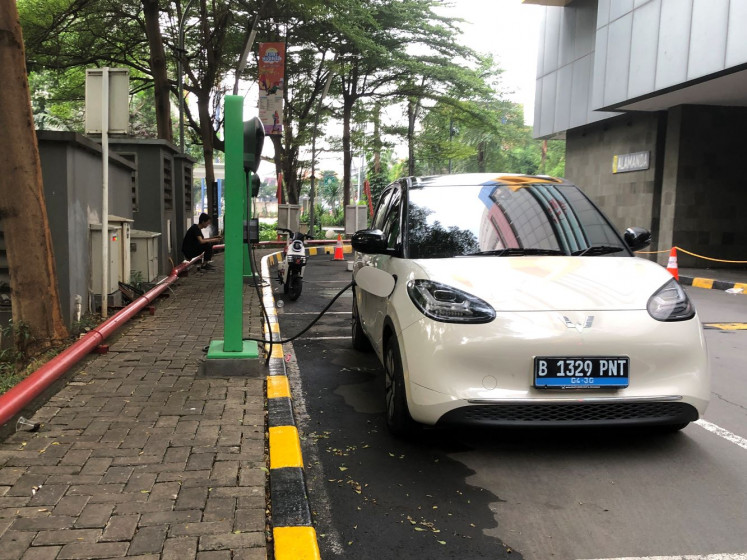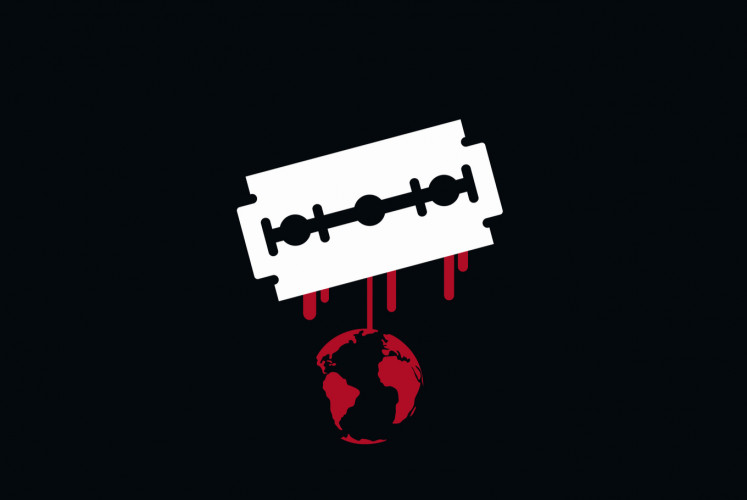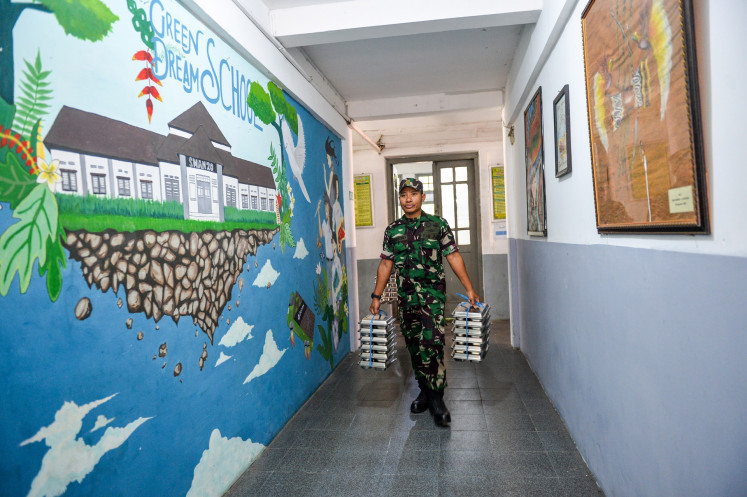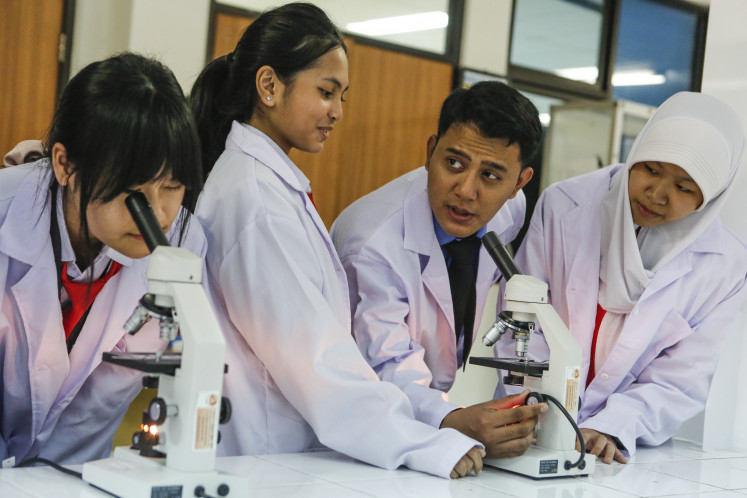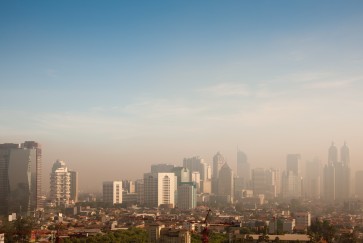Popular Reads
Top Results
Can't find what you're looking for?
View all search resultsPopular Reads
Top Results
Can't find what you're looking for?
View all search resultsAir pollution in Greater Jakarta — a national disgrace
Greenpeace Indonesia fanned out across Greater Jakarta, armed with small hand-held devices that monitor air quality in real time.Nowhere in the city, a region of 28 million people, was the air safe to breathe.
Change text size
Gift Premium Articles
to Anyone
O
ver the course of February, volunteers and staff from Greenpeace Indonesia fanned out across Greater Jakarta, armed with small hand-held devices that monitor air quality in real time.
What they found was truly shocking. Nowhere in the city, a region of 28 million people, was the air safe to breathe.
The measurements taken of PM2.5 — tiny particulate matter — showed levels far higher than the maximum daily guideline set by the World Health Organization (WHO).
PM2.5 is important because it is potentially the most damaging of all the noxious chemicals found in air pollution. Everyone is affected, but the very young and those with respiratory conditions like asthma are particularly at risk.
The WHO says any exposure to PM2.5, which is more than 25 ųg/m3 over a 24-hour period, is a danger to human health. The measurements on Feb. 28, 2017 taken by Greenpeace showed that in one area, Cibubur, the PM2.5 level reached 225 — that is nine times the WHO limit. It proves that housing estates in periphery areas are taking the same risk of bad air quality.
There is no place to hide from the pollutant. Depok also experienced the same problem. The air quality monitor placed in Kukusan near the greenery of University of Indonesia (UI) on the same day showed a measurement almost four times higher than the WHO standard.
In a scandalous abdication of responsibility, the government of Indonesia doesn’t aspire to adhere to WHO standards for air quality. It has its own limits, which are much weaker. The National Ambient Air Quality Standard allows a limit of 65 ųg/m3 over a 24-hour period.

